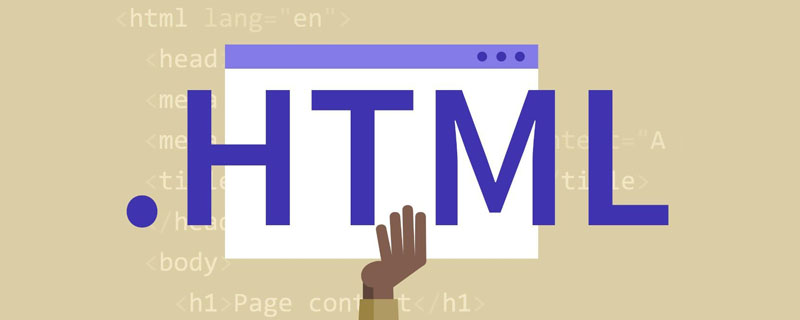HTML5Taking photos First, let’s take a look at the HTML code structure. Of course, this part of the DOM content should be dynamically loaded and generated after the user allows the use of their cameraevent, Interested friends can learn about it
First, let’s take a look at the HTML code structure. Of course, this part of the DOM content should be dynamically loaded and generated after the user allows the use of his camera event.
Note: We use the resolution of 640X480. If you use JS to dynamically generate it, you can flexibly control the resolution.
The code is as follows:
<!-- 声明: 此p应该在允许使用webcam,网络摄像头之后动态生成 宽高: 640 *480,当然,可以动态控制啦! --> <!-- Ideally these elements aren't created until it's confirmed that the client supports video/camera, but for the sake of illustrating the elements involved, they are created with markup (not JavaScript) --> <video id="video" width="640" height="480" autoplay></video> <button id="snap">Snap Photo</button> <canvas id="canvas" width="640" height="480"></canvas>
JavaScript
As long as the above HTML element is created, the JavaScript part will be simpler than you think:
The code is as follows:
// 设置事件监听,DOM内容加载完成,和jQuery的$.ready() 效果差不多。
window.addEventListener("DOMContentLoaded", function() {
// canvas 元素将用于抓拍
var canvas = document.getElementById("canvas"),
context = canvas.getContext("2d"),
// video 元素,将用于接收并播放摄像头 的数据流
video = document.getElementById("video"),
videoObj = { "video": true },
// 一个出错的回调函数,在控制台打印出错信息
errBack = function(error) {
if("object" === typeof window.console){
console.log("Video capture error: ", error.code);
}
};
// Put video listeners into place
// 针对标准的浏览器
if(navigator.getUserMedia) { // Standard
navigator.getUserMedia(videoObj, function(stream) {
video.src = stream;
video.play();
}, errBack);
} else if(navigator.webkitGetUserMedia) { // WebKit-prefixed
navigator.webkitGetUserMedia(videoObj, function(stream){
video.src = window.webkitURL.createObjectURL(stream);
video.play();
}, errBack);
}
// 对拍照按钮的事件监听
document.getElementById("snap").addEventListener("click", function() {
// 画到画布上
context.drawImage(video, 0, 0, 640, 480);
});
}, false);
Finally, remember to put your web page under the web server and access it through the http protocol.
In addition, the browser version needs to be newer and support the new features of HTML5.
The translator is not considered competent because he did not translate according to the original text. The browser used is chrome 28.
Finally, paste the complete code, which is relatively dull.
The code is as follows:
浏览器webcamera <script> // 设置事件监听,DOM内容加载完成,和jQuery的$.ready() 效果差不多。 window.addEventListener("DOMContentLoaded", function() { // canvas 元素将用于抓拍 var canvas = document.getElementById("canvas"), context = canvas.getContext("2d"), // video 元素,将用于接收并播放摄像头 的数据流 video = document.getElementById("video"), videoObj = { "video": true }, // 一个出错的回调函数,在控制台打印出错信息 errBack = function(error) { if("object" === typeof window.console){ console.log("Video capture error: ", error.code); } }; // Put video listeners into place // 针对标准的浏览器 if(navigator.getUserMedia) { // Standard navigator.getUserMedia(videoObj, function(stream) { video.src = stream; video.play(); }, errBack); } else if(navigator.webkitGetUserMedia) { // WebKit-prefixed navigator.webkitGetUserMedia(videoObj, function(stream){ video.src = window.webkitURL.createObjectURL(stream); video.play(); }, errBack); } // 对拍照按钮的事件监听 document.getElementById("snap").addEventListener("click", function() { // 画到画布上 context.drawImage(video, 0, 0, 640, 480); }); }, false); </script><!-- 声明: 此p应该在允许使用webcam,网络摄像头之后动态生成 宽高: 640 *480,当然,可以动态控制啦! --> <!-- Ideally these elements aren't created until it's confirmed that the client supports video/camera, but for the sake of illustrating the elements involved, they are created with markup (not JavaScript) --> <video id="video" width="640" height="480" autoplay></video> <button id="snap">Snap Photo</button> <canvas id="canvas" width="640" height="480"></canvas>
The above is the detailed content of Introduction to sample code for taking pictures using HTML5. For more information, please follow other related articles on the PHP Chinese website!
 html5的div一行可以放两个吗Apr 25, 2022 pm 05:32 PM
html5的div一行可以放两个吗Apr 25, 2022 pm 05:32 PMhtml5的div元素默认一行不可以放两个。div是一个块级元素,一个元素会独占一行,两个div默认无法在同一行显示;但可以通过给div元素添加“display:inline;”样式,将其转为行内元素,就可以实现多个div在同一行显示了。
 html5中列表和表格的区别是什么Apr 28, 2022 pm 01:58 PM
html5中列表和表格的区别是什么Apr 28, 2022 pm 01:58 PMhtml5中列表和表格的区别:1、表格主要是用于显示数据的,而列表主要是用于给数据进行布局;2、表格是使用table标签配合tr、td、th等标签进行定义的,列表是利用li标签配合ol、ul等标签进行定义的。
 html5怎么让头和尾固定不动Apr 25, 2022 pm 02:30 PM
html5怎么让头和尾固定不动Apr 25, 2022 pm 02:30 PM固定方法:1、使用header标签定义文档头部内容,并添加“position:fixed;top:0;”样式让其固定不动;2、使用footer标签定义尾部内容,并添加“position: fixed;bottom: 0;”样式让其固定不动。
 HTML5中画布标签是什么May 18, 2022 pm 04:55 PM
HTML5中画布标签是什么May 18, 2022 pm 04:55 PMHTML5中画布标签是“<canvas>”。canvas标签用于图形的绘制,它只是一个矩形的图形容器,绘制图形必须通过脚本(通常是JavaScript)来完成;开发者可利用多种js方法来在canvas中绘制路径、盒、圆、字符以及添加图像等。
 html5中不支持的标签有哪些Mar 17, 2022 pm 05:43 PM
html5中不支持的标签有哪些Mar 17, 2022 pm 05:43 PMhtml5中不支持的标签有:1、acronym,用于定义首字母缩写,可用abbr替代;2、basefont,可利用css样式替代;3、applet,可用object替代;4、dir,定义目录列表,可用ul替代;5、big,定义大号文本等等。
 html5废弃了哪个列表标签Jun 01, 2022 pm 06:32 PM
html5废弃了哪个列表标签Jun 01, 2022 pm 06:32 PMhtml5废弃了dir列表标签。dir标签被用来定义目录列表,一般和li标签配合使用,在dir标签对中通过li标签来设置列表项,语法“<dir><li>列表项值</li>...</dir>”。HTML5已经不支持dir,可使用ul标签取代。
 html5是什么意思Apr 26, 2021 pm 03:02 PM
html5是什么意思Apr 26, 2021 pm 03:02 PMhtml5是指超文本标记语言(HTML)的第五次重大修改,即第5代HTML。HTML5是Web中核心语言HTML的规范,用户使用任何手段进行网页浏览时看到的内容原本都是HTML格式的,在浏览器中通过一些技术处理将其转换成为了可识别的信息。HTML5由不同的技术构成,其在互联网中得到了非常广泛的应用,提供更多增强网络应用的标准机。
 Html5怎么取消td边框May 18, 2022 pm 06:57 PM
Html5怎么取消td边框May 18, 2022 pm 06:57 PM3种取消方法:1、给td元素添加“border:none”无边框样式即可,语法“td{border:none}”。2、给td元素添加“border:0”样式,语法“td{border:0;}”,将td边框的宽度设置为0即可。3、给td元素添加“border:transparent”样式,语法“td{border:transparent;}”,将td边框的颜色设置为透明即可。


Hot AI Tools

Undresser.AI Undress
AI-powered app for creating realistic nude photos

AI Clothes Remover
Online AI tool for removing clothes from photos.

Undress AI Tool
Undress images for free

Clothoff.io
AI clothes remover

AI Hentai Generator
Generate AI Hentai for free.

Hot Article

Hot Tools

WebStorm Mac version
Useful JavaScript development tools

SublimeText3 Mac version
God-level code editing software (SublimeText3)

SublimeText3 Chinese version
Chinese version, very easy to use

Safe Exam Browser
Safe Exam Browser is a secure browser environment for taking online exams securely. This software turns any computer into a secure workstation. It controls access to any utility and prevents students from using unauthorized resources.

Dreamweaver Mac version
Visual web development tools






